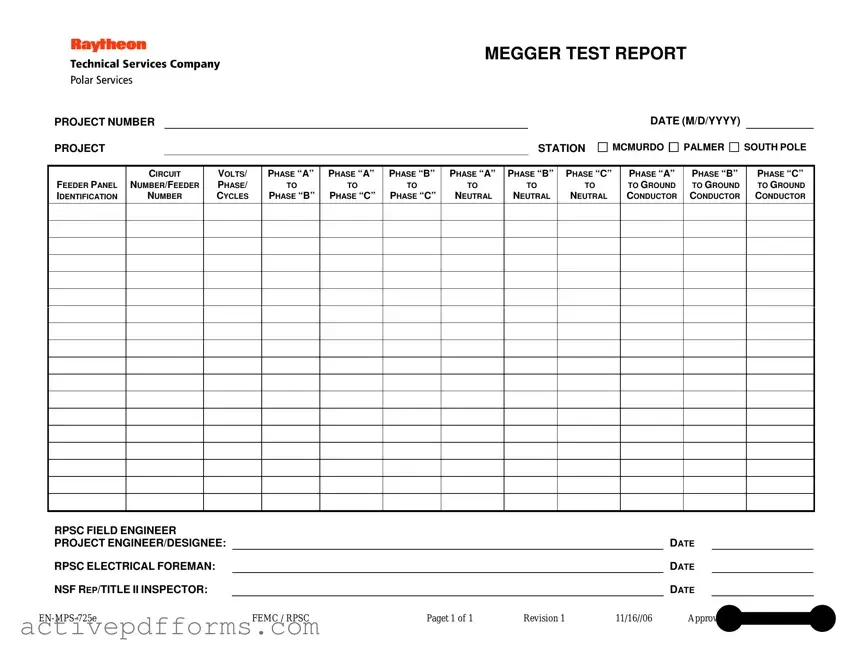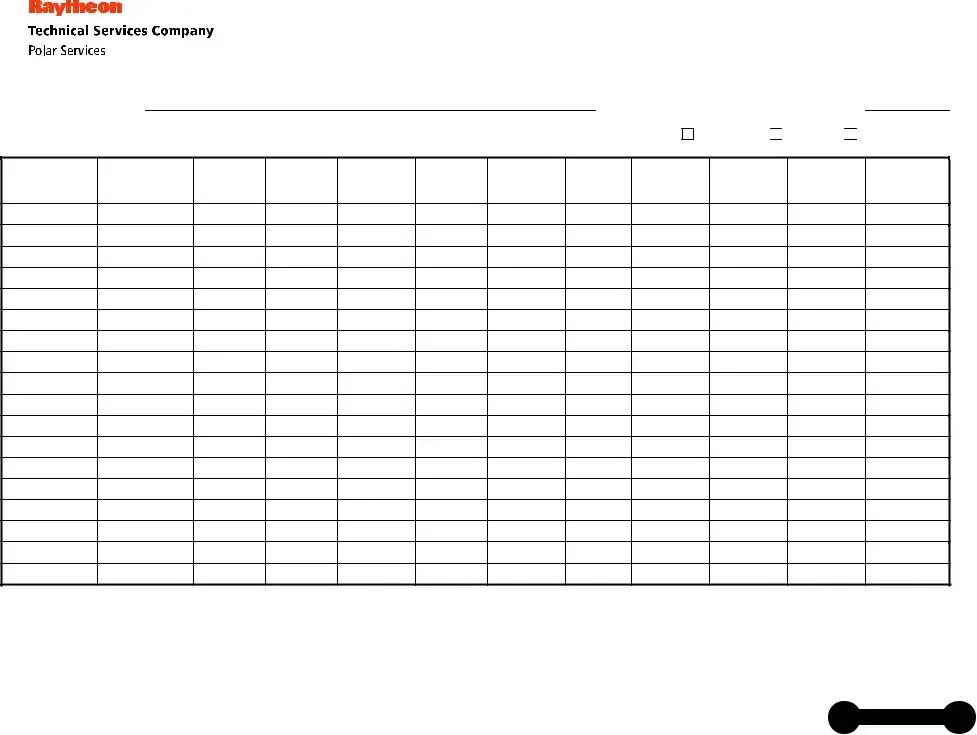In the realm of electrical testing and safety, the Megger Test Report serves as an essential document meticulously designed to ensure the integrity and safety of electrical installations in some of the most challenging environments on Earth. The form is structured to encapsulate comprehensive details that include the project number, station, and date, offering a snapshot of when and where the testing was performed. Whether at McMurdo, Palmer, or the South Pole, the specified locations underscore the critical nature of these evaluations in extreme conditions. The report meticulously records the performance of electrical feeders and panels, detailing the circuit numbers or feeder numbers alongside the vital parameters of volts, phase, and cycles. It further examines the electrical insulation's integrity between phases, to neutral, and to the ground, providing a clear picture of potential hazards or deterioration. The inclusion of signatures from RPSC Field Engineers, Project Engineers or Designees, and RPSC Electrical Foremen, in addition to a NSF Representative or Title II Inspector, signifies the collaborative effort and rigorous review process undertaken to validate the findings. Approved by Wayne L. Cornell, the form’s revision date of November 16, 2006, hints at its enduring relevance in maintaining operational safety and compliance within the demanding contexts of Antarctic research facilities, as outlined by the FEMC/RPSC document identification EN-MPS-725e.



 PALMER
PALMER 
 SOUTH POLE
SOUTH POLE